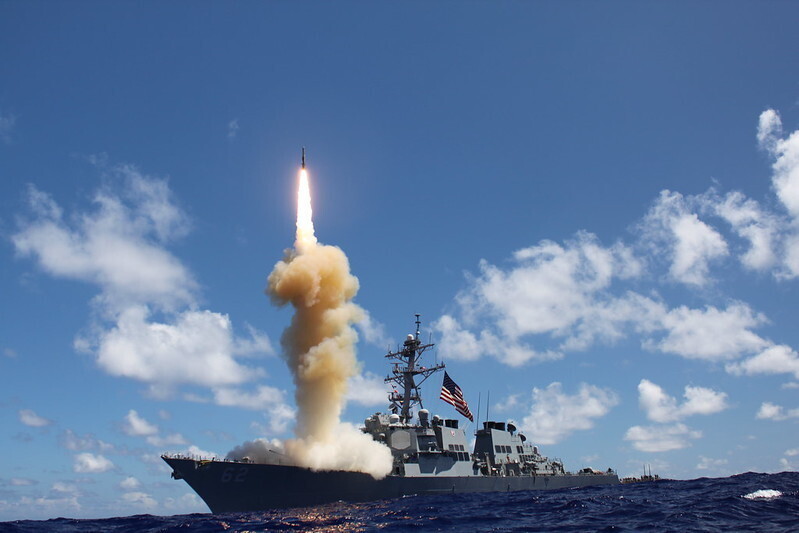
The guided-missile destroyer USS Fitzgerald (DDG 62) launches a Standard Missile-3 (SM-3) as a part of a joint ballistic missile defense exercise on Oct. 25, 2012. (US Navy)
South Korean Prime Minister Han Duck-soo (right) greets Hao Peng, the Communist Party of China’s secretary for Liaoning Province, during the latter’s trip to Seoul on April 25, 2024. (Prime Minister’s Office)
An SM-3 Block 1B interceptor is launched from the USS Lake Erie (CG 70) during a Missile Defense Agency (MDA) and U.S. Navy test in the mid-Pacific, May 15, 2013. (US Navy)
North Korea’s Rodong Sinmun newspaper reported on Jan. 31, 2022, that the North had conducted a test strike of its Hwasong-12 intermediate-range surface-to-surface ballistic missile the day before. North Korean media claimed the launch was successful, disclosing photographs of the Earth taken with a camera mounted on the missile. (KCNA/Yonhap)
Hao Peng, the Communist Party secretary of China’s Liaoning Province, visited South Korea at the invitation of Gyeonggi Province from April 22-25, where he met with various officials. This visit marked the first post-COVID-19 visit by a Chinese regional government official, signaling a potential thaw in South Korea-China relations.
Following Hao’s departure, South Korea approved a strategy to procure ship-based anti-ballistic missiles for its next-generation Aegis destroyer. This decision, which coincided with Hao’s visit, sparked discussions on the implications for South Korea-China relations.
Despite concerns and differing opinions within the military, the decision to introduce SM-3 interceptor missiles highlights the complexities in foreign and national security policy-making.
The dispute over the suitability of the SM-3 for the Korean Peninsula’s operational environment, particularly in intercepting North Korean ballistic missiles, remains a key point of contention. The introduction of SM-3s has raised questions about South Korea’s defense strategy and its alignment with the US missile defense system.
